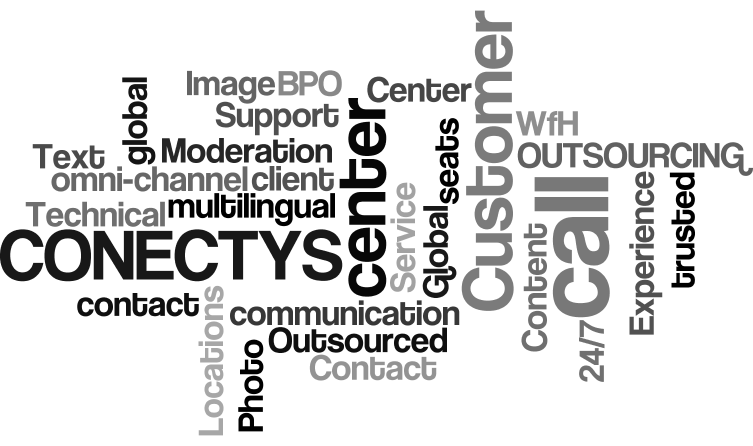Three Major Changes and Two that will Shape the Future
Tim Berners-Lee, an English computer scientist, wrote a proposal for a distributed information system, and, on March 12th, 1989, he submitted it to CERN (The European Organization for Nuclear Research). That information system came to be known as the World Wide Web.
On July 28th, we celebrated 10,000 days of the Internet and how it’s changed our lives. It’s also changed the way we do business and, more importantly, the way we relate to our customers.
Here are three of the most important things that the advent of the Internet has changed about the way we do customer service and two that will shape it in years to come.
1. Customer Feedback
If in the past a bad customer experience could have gone unnoticed by the masses, these days a bad customer review can seriously damage a brand’s trust, with the push of a button. We’ve all seen bad restaurant reviews and decided not to reserve a table, or poor customer experience with a service provider and decided against paying for their services.
Statistically, one happy customer will share their experience with around 9 people. By contrast, for every customer who complains, there are, on average, 26 other unsatisfied customers who don’t communicate their frustrations. This means that the key to improving your customer experience lies in that one single complaint, which offers you an insight into what might be bothering a lot more people.
Meanwhile, 76% of customers see customer service as being proof of how much a company values them (2015 Aspect Consumer Experience Survey).
2. Digital Communication
Social media has become a key customer service channel and a great asset to your business if used to its full potential. With the aid of the internet, customers can now reach out to you through any social media platform, as long as you meet them on their preferred channel. To provide them with anything but swift, the personalized response would be a big mistake. At the end of the day, the way you handle customers’ issues with your products has a deeper impact than the issues themselves.
According to the customer experience consultancy firm, thinkJar, 55% of customer requests for service on social media are not acknowledged. Missing out on these opportunities to increase customer loyalty and create brand advocates should not be an option. Moreover, 67% of consumers say they use Twitter and Facebook for customer service. Meet your customers where they are and you will be rewarded.
Conectys’ customer service contact volume through social media was close to 2% in June 2016, across all industries. It’s also become increasingly important for clients in the e-commerce and customer products industries, in which social media accounts can account for up to 30% of total contacts.
3. Self-service
The internet has not only made it easier for us to communicate with one another, but it’s also made information readily available for anyone, at any time, and from any device. We can now find out everything we want to know about the world around us in the time it takes our search engine to display its results. And with information at your fingertips, it’s easy to see why customer self-service has become so popular.
More and more people want to help themselves, rather than call a company’s support line for answers. Between FAQs and forums, there is no shortage of methods a company can use to help customers help themselves.
Moreover, according to the 2015 Global State of Multichannel Customer Service Report, “90% of consumers now expect a brand or organization to offer a self-service customer support portal.” This should tell you everything you need to know about whether or not you should be implementing self-service tools.
Your outsourced customer service partner should see self-service as an opportunity for business growth through leading customer experience and needs to drive your self-service strategy at the expense of short term wins.
What does the future hold?
1. Omnichannel approach
A couple of months ago, we published a blog post about what omnichannel is and why you should care. While it’s been around for a while, mostly used in retail, it’s still taking its first steps into the realm of mass adoption in customer experience.
With information being so widely available and communication happening on multiple channels, customers look for speedy resolutions to their issues on all channels and platforms, not just on social media. They also expect you to know the issues they’ve communicated in the past, regardless of channel, and for you to be prepared with solutions without the pain of repeated communication. Creating a personalized experience for your customers on all the channels they use to get in touch with you will become the norm in the future.
However, as of the end of 2015, less than 1% of companies are implementing, or have implemented an omnichannel approach to their customer service. Of those, only 23% of companies doing multi-channel well.
Conectys’ omnichannel approach (for one its flagship global clients in the gaming industry) has improved Net Promoter Scores (customer loyalty) to above 60 in Europe, a great indication of the company’s future growth.
2. Automation
Automation is as hailed as it is hated, but the fact remains that it makes processes easier for companies and reduces errors. The idea of automation is not to replace the workforce but to create increased value for everyone involved. The customer will have access to answers faster, the company will have the first line of defense set in place for customer support, and employees will no longer have to spend time on repetitive tasks, but improve their skills for more complex, high-value work. Coupled with a strong self-service base, automation has the potential do decrease the contact to agent ration significantly if implemented.
You can also automate other time-consuming processes, such as customer satisfaction surveys (Net Promoter Score, Customer Effort Score, First Contact Resolution). This will give you access to key consumer insights in real-time, allowing you to improve your strategies on-the-go, meaning a better customer experience in the long run. Just remember: automate your processes, not your relationships with your customers.
In what other ways do you think the Internet has changed customer service?
Looking for an outsourcing provider to take your customer service into the future? Find out how to choose the perfect vendor for your company!



